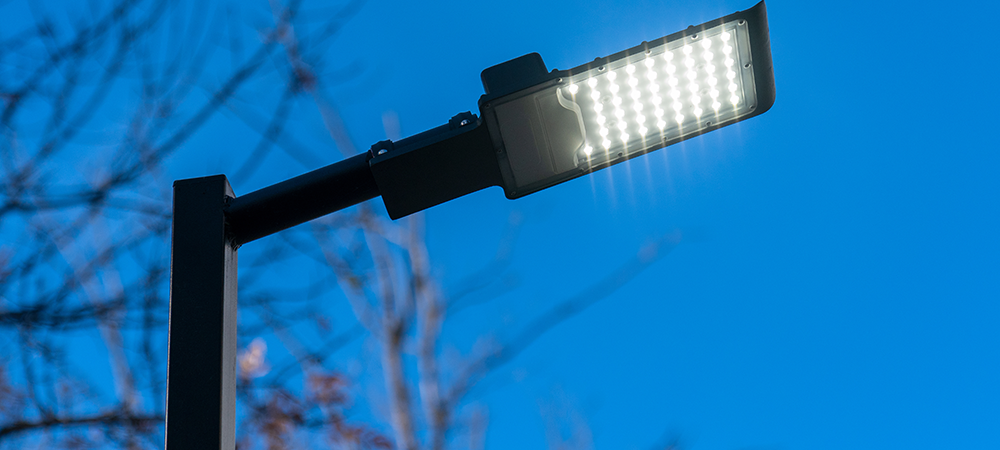As IoT adoption rises, we hear from Phil Beecher, CEO and President of Wi-SUN Alliance, about the current use of Smart Streetlights and how they can benefit residents and communities.
The UN has revealed that by 2050 more than two-thirds of the global population will be living in urban areas. Subjected to ever-greater pressures of the human population, it means that Smart Technologies will be integral to the successful functioning of urban environments, now and in the future.
This level of growth is creating a host of difficult challenges for councils and city authorities and urban planners. From the amount of traffic on the roads, rising carbon emissions and poor air quality, to increasingly hard-to-manage urban waste and a growing strain on utilities, huge stresses are being placed on critical public infrastructure and services that simply were not designed to cater to such volumes of people.
However, technology is helping to tackle many of these issues and has the potential to do much more.
Between highways and pedestrianised streets, many of the urban environments that we frequent are now leveraging the Internet of Things (IoT) to facilitate remote monitoring, management and control of critical assets, generating huge streams of real-time data that can be used to provide critical insights and actionable information. For smart city planners, IoT is becoming a top priority for this reason.
In a ‘state of the nation’ report ‘The Journey to IoT Maturity’ published by Wi-SUN in 2022, a study of IT decision makers from UK and US IoT adopters – including those in Smart Cities, Smart Utilities and industrial IoT (IIoT) – shows that more than 92% agree that they must invest in IoT technologies in order to remain competitive.
Streetlighting is the entry point for IoT adopters looking for Smart Solutions
This consensus is leading to an uptick in planned deployments, with smart streetlighting as one area where IoT is having a major impact.
According to the Global Smart Street Lighting and Smart Cities: Market Forecast (2020-2029) Volume VI, more than one in four streetlights globally have been converted to LEDs, while over 10 million Smart Streetlights have been connected globally (not including China and India).
As the deployment of Smart Streetlights rises, the benefits continue to become more evident. In Miami, Florida, for example, half a million streetlights have been connected, helping to dramatically reduce energy consumption and carbon dioxide emissions across the city. In Paris, 280,000 connected streetlights are delivering 70% savings on annual streetlight energy costs, according to IoT Analytics.
This business case is inspiring more IoT adopters to look at streetlighting as the entry point for wider IoT development and investment. According to Wi-SUN’s report, almost three-quarters (72%) of IoT adopters are ‘very likely’ or ‘definitely’ planning to deploy the technology for streetlighting, up from 61% in our initial IoT study back in 2017.
The City of London making the case for Smart Streetlighting
Projects in Miami and Paris are just two examples of successful street lighting projects supported by Wi-SUN FAN wireless mesh technology.
In the UK, the City of London has also deployed a Wi-SUN network to support 15,000 connected streetlights, as well as support use cases for environmental and air quality and for monitoring the presence of lifebelts along the Thames.
Completed in 2021, the project has been a core component of the capital’s transition to becoming a Smart City, with sensors to collect data and build a business case for further technology investment.
The city’s outdated and inefficient lighting system was replaced to help manage rising energy costs, reduce energy consumption and improve citizen safety, lighting up London’s streets, walkways, landmarks and other public infrastructure, including bridges and tunnels.
To succeed in a project of such scale, the capital needed a wireless communications network capable of penetrating the urban landscape’s uniquely dense and narrow lanes that lie between modern high-rises and historic buildings. Wi-SUN FAN provided an optimal solution as a technology capable of connecting all of the lights and providing a robust system to control lighting levels and fault reporting through a central management system.
Completed three years ago, the City of London authority is saving 60% on its energy costs derived from light and has moved into the next phase of its Smart City journey, installing traffic and air quality monitoring sensors powered by the same network as part of a trial into zero emissions.
The success of smart streetlamps in a huge and complex city like London is a compelling case study for smart technology. Occupying just over a square mile, the city has a large population of around 450,000 workers in the daytime, but only 9,400 permanent residents at night.
Managing and moving such volumes of people is a massive challenge, and the streetlighting initiative has played an important role in supporting this, balancing the need for public safety and energy efficiency under increasing sustainability pressures and saving money.




